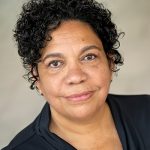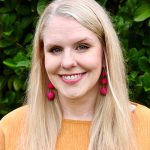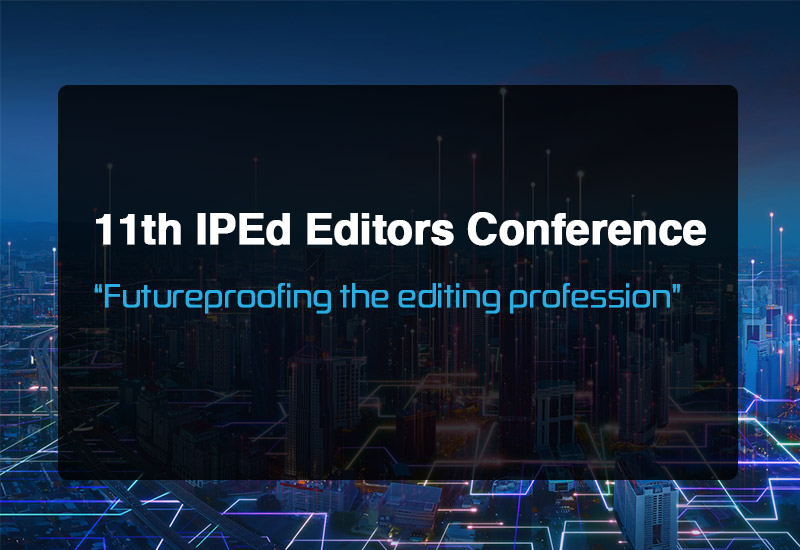Melbourne-based writer and IPEd member Thirangie Jayatilake shares her impressions of the 11th IPEd Editors Conference. As an emerging editor who completed her Masters degree in creative writing, publishing and editing at University of Melbourne, Thirangie was immediately drawn in by the conference theme, “Futureproofing the editing profession”.
 The 11th IPEd Editors Conference was packed with practical advice and food for thought and if I were to go into detail about everything that I found memorable, this article could fill a book! Instead, I’ll just share a few things that resonated with me as an editor based in Melbourne/Naarm.
The 11th IPEd Editors Conference was packed with practical advice and food for thought and if I were to go into detail about everything that I found memorable, this article could fill a book! Instead, I’ll just share a few things that resonated with me as an editor based in Melbourne/Naarm.
3 May – Setting the scene

Dr Katherine Day
In “Publishing ecologies and editorial practice in the 21st century gig economy”, Dr Katherine Day and Dr Jocelyn Hargrave began with the problems around defining what an editor does, stating that the mysterious shroud surrounding editorial work has led to far reaching consequences in the industry. Increasingly changing technologies create a higher demand for editorial work leading to a higher work output. This landscape demands higher speed and efficiency levels, which increase the pressure on the editor and affects quality control. They noted that the editor’s role has become more transactional with editors having to expand their knowledge in rights and sales, translations, negotiations across subsidiaries, rights licensing, merchandising, film and movie rights, and language and serial rights. While this maximises opportunities for authors, it increases the editor’s workload, and may diminish editorial excellence, their control over the processand the joy of editing.
Dr Day and Dr Hargrave highlighted the systematic bias against editors who are deemed invisible which affects their pay and working conditions. With more graduates entering the workforce, the competition for entry level and freelance positions have increased, thereby affecting an editor’s delight in the process or the ability to begin experiencing this joy in an economy with a higher cost of living. The trade sector is highly romanticised, which feeds into higher enrolment numbers that reduces graduates’ likelihood of securing work in the present publishing workforce.
However, Dr Day and Dr Hargrave ended their session on a positive note, confiding that they hope that their work will help editors to be rewarded appropriately for their invaluable contribution. By bringing transparency to the undervalued editorial profession, they are determined to create a wider support base for experienced and hopeful editors.
4 May – Vital skills to futureproof your editing practice

Dr Sandra Phillips
The next day acknowledged the distance we must cover to understand and champion diversity. In Dr Sandra Philips’s keynote speech, she highlighted important research (Driscoll and Bowen 2022) on the Australian publishing workforce, which revealed that less than 1% were of Indigenous descent and only 8.5 % identified as having an Asian cultural identity. Dr Philips established that it was vital for editors to engage with Indigenous cultures, as our outsider status and gaps in knowledge will be the root cause of many questions that arise during the editing process. She emphasised that editors must do our own research on Indigenous history and culture, and that when we have conversations with Indigenous authors regarding their work, we should contextualise the questions in reference to what we understand and don’t understand.
5 May – Publishing and micro-credentials for editing
IPEd’s Accessibility Initiative Working Party launched their project “Books without barriers: A practical guide to inclusive publishing”, which is now available for free via the IPEd website. The book authors, Julie Ganner, Dr Agata Mrva-Montoya, Maryanne Park AE and Kayt Duncan, provided tips like using double quotation marks since single quotation marks are easily confused with apostrophes on screen readers, including alt-text for all images, and ensuring that all graphs, diagrams, symbols and equations are accompanied by descriptions. They also suggested using language that appeals to non-visual senses for children’s picture books since the books could be read by children with vision impairments, or parents, guardians or teachers with visual impairments. Including illustrations that can be transferred to tactile elements and using design elements that improve readability and engagement can vastly improve the reading experience.
8 May – Publishing and information design

Justine Dixon Cooper
Justine Dixon Cooper held a fascinating session on the multifaceted editor via nine personality types that appear in the editorial process. First up was the “Perfectionist” with Cooper’s research depicting that 66% of editors identify as perfectionists, while 26% indicated a ‘maybe’. She emphasised the importance of managing our mental health and being upfront with clients about errors. Next, the “Gatekeeper”; an individual who loves fighting for the integrity of language. As a strategy, Cooper suggested prioritising consistency and clarity. The third character was the “Observer” with Cooper’s research suggesting that 82% of editors are introverted. She suggested that finding specific editorial communities and style guides can be helpful. The “Gardener” was next in line with a determination to eliminate extraneous words. This challenge can be mitigated with practices like turning most verbs into active verbs and listening to a language’s rhythm. Next, another popular character, the “Imposter”, with 65% of editors admitting to feeling like an imposter. Cooper suggested interrogating our fears and remembering our skills and track record. The “Architect” likes structures that people can easily understand, but getting through multiple layers of information can be difficult. Putting the main message up front and adding short summaries in key places can mitigate this problem. Number seven is the “Designer” who can make tasks less intimidating by creating a clear visual hierarchy and giving content space to breathe. The “Advocate” calls for equitable access and keeps up with ableist, racist and – conversely – reclaimed language. Finally, the ’Alchemist’ combines all the above characters and their strengths to stitch the piece together.
9 May – Editing in the digital age

Martin Delahunty
Martin Delahunty, Managing Director of Inspiring STEM Consulting and the former Global Director of Springer Nature, was the keynote speaker for the session “AI and related technology in scholarly publishing – a double-edged sword?” Paraphrasing researcher Curtis Langlotz, who commented on the ways that AI had changed radiology, Delahunty presented the perspective that while AI won’t replace editors, editors who use AI may one day replace those who don’t. Delahunty recommended that editors learn about the strengths and limitations of AI tools and use that to our advantage. He suggested using AI for basic functions and being up front with clients about using AI as a tool. Delahunty recommends publishers and editors update authorship guidelines and practices going forward, educate internal editorial teams on AI tools and participate in cross-publisher initiatives.
Nigel Brew built upon this framework in the next session, expanding to address changes in the publishing field during the digital age. Brew highlighted that with the onset of ebooks, many had anticipated the death of physical books. However, physical books are still a dominant publishing method with physical books being the most popular medium with a hefty 65% preference (2019) over other mediums. Furthermore, ebooks still use the same editorial conventions. An interesting anecdote Brew presented was the elimination of the New York Times copyeditors desk in 2017, only for aspects of its function to be reinstated in 2019. He suggested that we perceive digital publishing as a link to the future, connecting physical books to the future.

